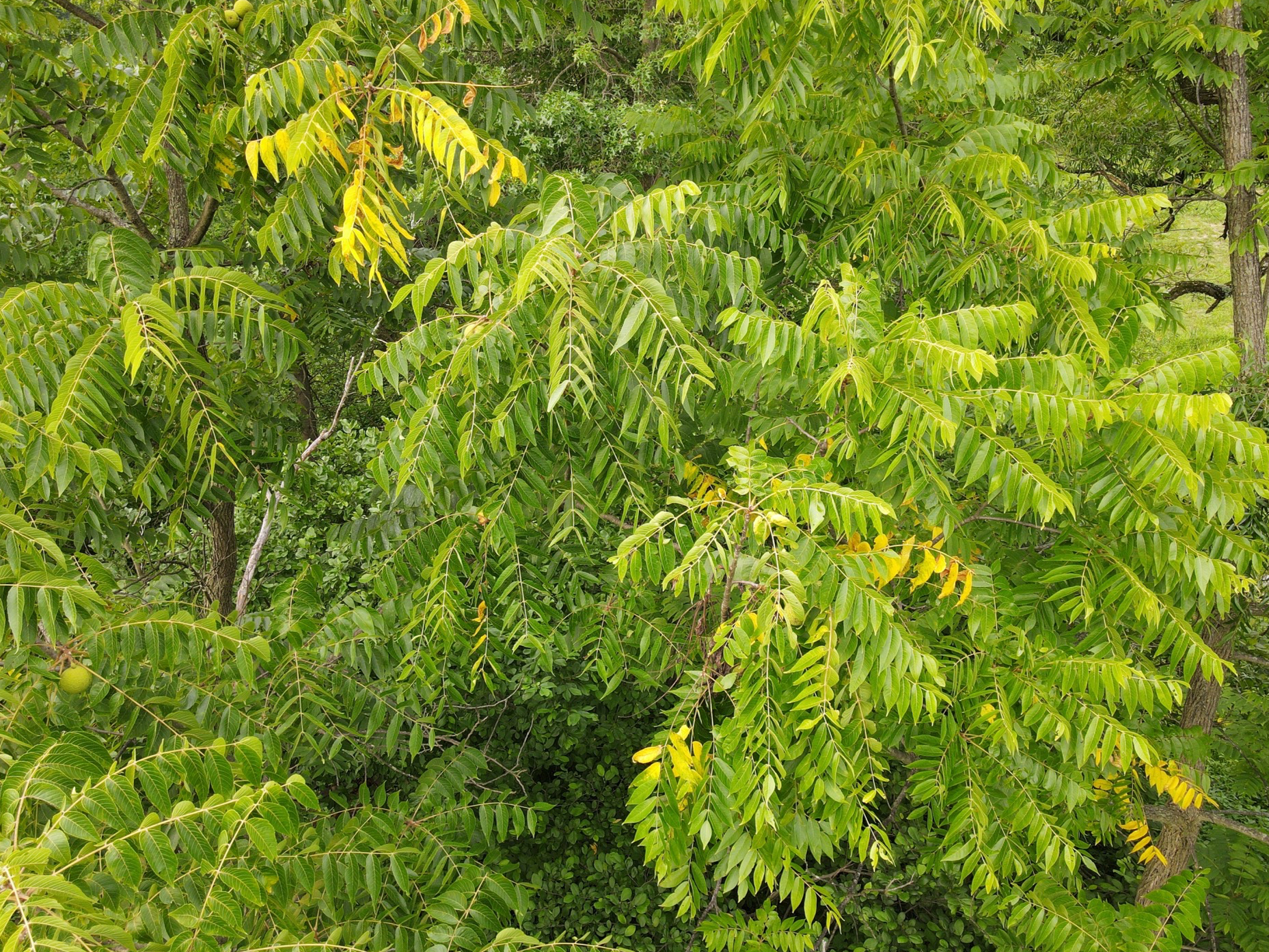Crow’s Nest: Spotted lanternfly damage on walnut
By Daniel Barringer, Preserve Manager.

When you see this yellow “flagging” of leaves at the tips of branches on black walnut trees (Juglans nigra), take a closer look. Chances are you will find spotted lanternfly (Lycorma delicatula) early instars in high numbers. This is a pest insect that only recently has been found in Pennsylvania (since 2014) and is now spreading to adjacent states. While lanternfly devastation on grapevines and in orchards has widely been observed, the impact on our native hardwoods is still being studied. For us, black walnut is the most obvious of affected species.

This is the second year I’ve observed the early instars of lanternfly in high numbers on walnut. But those years are not contiguous; it was very noticeable two years ago and again this year. (I’m not doing any formal study however, just observing what I can while out working on the preserve, so that’s not conclusive.) We have a lot of walnut growing along the edge of the woods and the farm fields, and we mow trails on these borders. If the mower roll hoop bumps a low branch above then lanternflies shower down.
These early instars do not fly, they only crawl up trees—and jump to evade potential predators. The fourth instars, a little older and bigger than the third, have red on their backs. These insects are called planthoppers and have piercing mouthparts that penetrate branches and stems of their hosts. As sap moves through the tree it is ingested by the lanternflies (it is thought that they may be passively receiving the sap, not sucking it). But their feeding denies the leaves “downstream” of sugars and water, causing clusters of leaves to decline.
The lanternflies also exude a fair amount of waste; they have to take in a large volume of sap to get the energy they need. The exudate leaves a sticky residue that sooty molds colonize, causing additional impact to the plants below, by blocking the sunlight needed for photosynthesis.
Black walnut trees are also host to fall webworm (Hyphantria cunea) whose webs of nests are also just starting to show up as they do in late summer.
I’m not saying that insects feeding on plants is bad—indeed it is the means by which energy that plants make from the sun is transferred though the food web upon all life on earth depends. But the accidental introduction of a novel insect to a region where it is not native can have profound impacts on the plants and ecosystem function there, with consequences that are not known and quite probably not desirable. You know the common exchange, “How are you doing?” (followed by, perhaps with sarcasm) “Living the life!” Well, we’re “Living the experiment!” Heck, we all know what that means in these days of the “novel coronavirus.”
